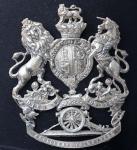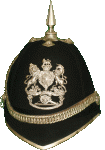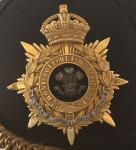-
Posts
1,761 -
Joined
-
Last visited
-
Days Won
3
Content Type
Profiles
Forums
Blogs
Gallery
Events
Store
Everything posted by Stuart Bates
-
Thomas Strong Seccombe, the illustrator of Benny's caricatures, was an officer in the Royal Artillery - commissioned as Lieutenant 21st June 1856 promoted Captain 3rd April 1867 promoted Major 21st August 1875 Not a very distinguished career apparently so just as well he had his drawing ability to fall back on. I have just followed Mikes' link and there are several copies of the book available, as indeed, are individual prints but the latter at £85 are a tad pricey. The individual prints are all dated 1873. As Mike says there are 26 prints in the series and I doubt that any/many were directed at a given individual and I say this just by looking at them. Stuart
-
Mervyn, now that clears up a lot of things, well done. I spoke to Benny yesterday and he has a wonderful caricature of an Argyll & Sutherland Highlander soldier but I see he hasn't posted it as yet. I have quite a few more of these social commmentaries of the early 19th Century, some by Cruicshank, but they are not military so don't belong here. Stuart
-
Mervyn, well spotted. It could very well be George IV as not only was he a dandy, hence the title, but in later years became an obese glutton and drunkard. The nose doesn't indicate the Duke of Wellington but the angle is not good enough to be definitive. I do wonder what the reference to the Farmer's BOY means. Stuart
-
This is an 1818 etching by an unknown artist and published by R W Fores, 50 Picadilli & Oxford Street. I originally thought that the left hand figure was the Duke of Wellington but the title is A Russian Dandy a Scene at Aix la Chappelle which is the city of Aachen in Germany. The Treaty of Aix la Chappelle was held in that city in 1748 to end the war of Austrian Succession. Ahh! Whilst mowing the lawn I was troubled by this one being titled A Russian Dandy and being produced in 1818. When I had finished I looked at a couple of books and indeed the Congress of Aix la Chappelle was the one held in 1818 after Waterloo. I was thinking of the Congress of Vienna which was, of course, held in 1814 after the surrender of the French forces at that time. So perhaps the figure is the Duke after all. Stuart
-
The plume is actually black over white but the white has obviously turned to a grey over the years. The 1855 Dress Regulations introduced coloured plumes and the 7th were allotted black over white. I believe these helmets are still worn by musicians of the remaining regiments of heavy cavalry although the plumes of the 4th/7th Dragoon Guards band are now plain white. Stuart
-
Brian, gotcha! The painting by Lady Butler shows the 2nd (Royal North British) Regiment of Dragoons which was their designation from 1751 to 1866 in which year they became the 2nd (Royal North British) Dragoons (Royal Scots Greys). Being heavy cavalry they were not part of the Charge of the Light Brigade and although the heavies were supposed to support the light cavalry they were not thrown away. At last, something of substance I can add. I used to own several horses and they are big dumb brutes. Get kicked by one or thrown and you will agree Stuart
-
Brian, I've already said it but what a terrific find. Now you need one with a King's crown You said earlier that all police horses had a name beginning with the letter "S" but PC Roberts is riding Peel. Do you know when the change was made? I presume that the "S" is because it was Staffordshire. Stuart






